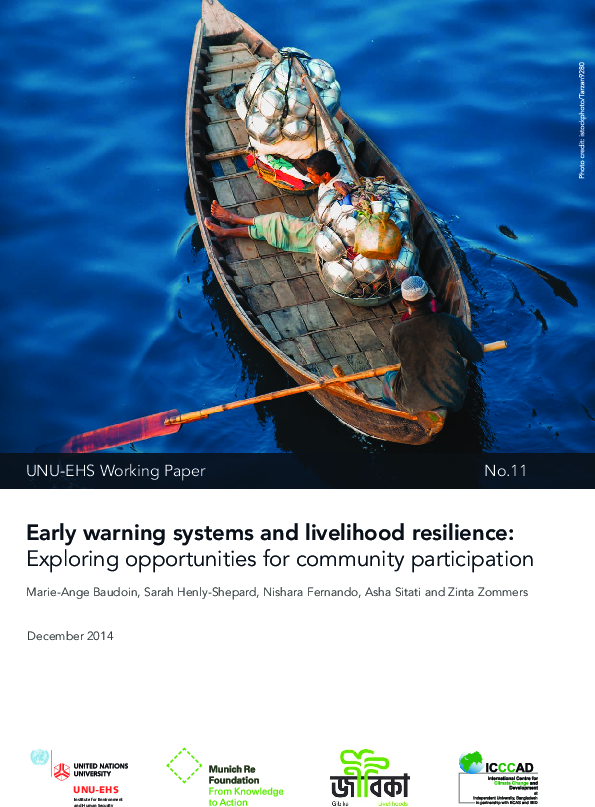
Case Studies and Success Stories, Reports, Study: Research
Early Warning Systems and Livelihood Resilience: Exploring opportunities for community participation
Publication year:
2014
English
Format:
(577.9 KiB)
Publisher:
United Nations University
Climate and natural hazards are increasing in intensity, frequency and complexity. Their related impacts have powerful implications for humanity, particularly communities with deep reliance upon natural resources. The development of effective Early Warning Systems could contribute to foster livelihood resilience by improving coping mechanisms and even enhancing adaptive capacity. However, current shortcomings in early warning systems’ conception and applications undermine risk reduction at the grassroots level, which contribute to loss of lives and shocks to livelihoods.
This paper provides multiple case studies illustrating best practices and challenges of participatory early warning systems, implemented at various scales in at-risk communities. Results indicate a need to significantly improve the way early warning systems are designed and applied. The paper suggests an integrated cross-scale approach that ensures the involvement of at-risk population from the risk detection to emergency management processes. Yet, such a participatory approach also raises multiple challenges, opening pathways for future research.
Read full abstract
Authors
View & Download
Document information
Publisher
Content type
Rights
© Author/Publisher
Found a mistake? Help us improve!
If you have noticed a document assigned to the wrong author or any other inaccuracies, let us know! Your feedback helps us keep our data accurate and useful for everyone.
Share
Link
